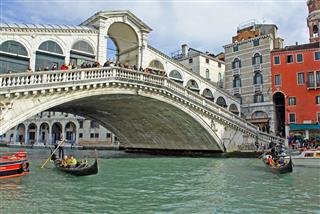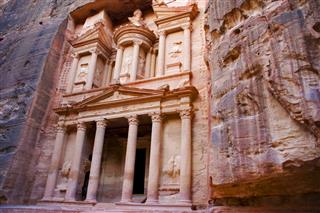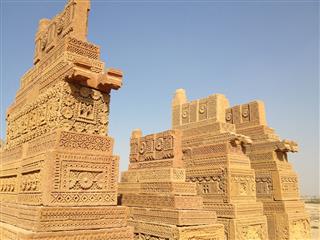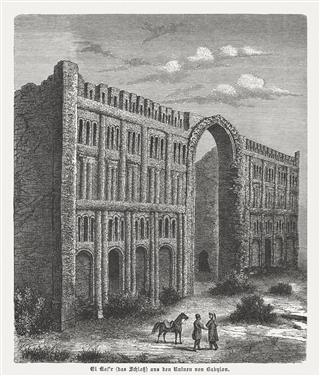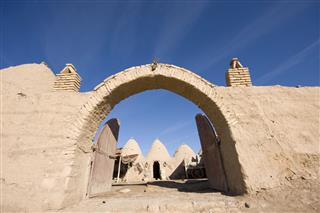
Various styles of architecture have evolved with time. From the traditional designs to the modern forms, one can see a phenomenal change in terms of design. Here’s a look at some of the different architectural styles, which are unique in their own way.
Architecture, as a profession, is growing in leaps and bounds today. From the olden days till date, the architectural styles have undergone a massive change. When one studies it’s different aspects, one can understand the kind of creativity that existed since the ancient times.
Modern architects often look up to the olden styles, which continue to inspire professionals in terms of their design and functionality. Today, one can find modern drawing software to make things easier for the architects. These renderings help to showcase the design even in a 3D form.
Various Architectural Styles with Description
Adam

The Adam style refers to the designs created by Robert Adam. This style is a part of neoclassical architecture.
Adirondack

Adirondack architecture is recognizable due to the rugged finish. The basis of this style is used for log cabins, rustic kitchens, boathouses etc. It particularly refers to the sites in the Adirondack Mountains, New York.
American Colonial

This one refers to the designs that were seen during the colonial period in the United States. (French Colonial, Spanish Colonial etc.)
American Foursquare

This one refers to structures of the late 1930s. It represents a basic square design, hipped roof with common rooms and generally, 4 rooms on each floor.
Amsterdam School Style

This style is about rounded facades, and the use of decorative elements. This style was prominent in the early period of the 20th century and was seen in the Netherlands.
Ancient Egyptian

Ancient Egyptian architecture is about the major use of mud bricks and stones for building the structures. The beautiful Egyptian temples and pyramids are some examples of this style.
Ancient Greek

Ancient Greek architecture can be distinguished by the specific elements such as the rectangular buildings and the large columns.
Anglo-Saxon

This refers to the buildings constructed in Britain. This style is simple and was seen from the mid-5th century till the Norman Conquest.
Art Deco

This one was visible during 1925 – 1939. It refers to a decorative and elegant style of architecture that encompassed many other basic techniques of architecture.
Art Nouveau

It was particularly popular at the turn of the 20th century. This style is about encompassing artistic and floral motifs in the structure. It is all about highly stylized designs. There are many historical buildings that belong to this type of architecture.
Australian

This style is further divided into residential and non-residential styles. It is directly related to the climatic conditions of the place, hence the use of specific materials.
Baroque

This style was dominant in the beginning of the 17th century. It always played around with a dramatic use of light, central projections, ornamental decoration, pear domes, etc. The works of Michelangelo created for the late Roman buildings belong to the Baroque architecture.
Bauhaus

This term represented a school in Germany which taught a combination of art and craft. It is recognizable because it focuses more on functionality rather than ornamentation.
Beaux-Arts

Beaux-Arts style was initially taught in Paris. It is about the use of symmetry, and implementation of a precise style for the design elements.
Biedermeier

This one is a simple and elegant style.
Blobitecture

This particular style was dominant in the mid 1990s. It is recognizable because of the use of unusual ‘blob-like’ shapes in the structure.
Brick Gothic

It is marked by the use of baked red bricks. There is minimal use of figures, and more emphasis has been put on the appropriate division of space.
Bristol Byzantine

This style was popular in Bristol. It is characterized by the simple outlines used for the architecture, and colors such as red or yellow.
Byzantine

This refers to the style that was seen during the Byzantine period. The use of the circular dome is one of the typical elements of Byzantine architecture.
Chilotan

This one is seen on the Chiloe Island and all the neighboring areas. All the earlier houses were built with wood, and roof shingles were also incorporated in the construction.
Chinese

Chinese architecture is all about the balance and symmetry in the design. The designs have an emphasis on the use of a horizontal axis. This style has influenced the architecture in Japan, Vietnam, and Korea.
Dutch Colonial

There was a revival of this architectural style in the latter period of the 19th century. The style is distinguishable because of the gambrel roofs (symmetrical two-sided roofs that have two slopes on both sides), and the curved edges.
Egyptian Revival

This style draws its inspirations from the architectural style used in Ancient Egypt. This revival was particularly noticeable in the United States.
Elizabethan

This term refers to the architectural style that was followed during the reign of Queen Elizabeth I. It actually represents the early Renaissance style in England.
English Gothic

This style was predominant in England. One can recognize this style from the pointed arches, very large windows, and the conical structures on top of the buildings (known as spires).
Expressionist

This style was developed in Europe during the early decades of the 20th century. This style is more inclined towards the Gothic architecture.
Futurist

Futurist architecture was seen during the early period of the 20th century. This style laid emphasis on the implementation of long horizontal lines in the design.
Georgian

It refers to the style that was prevalent from 1720 – 1840. It featured buildings that had chimneys on both sides of the house, with a portico in the middle of the roof along with a central window.
Googie

This style belongs to the category of futuristic architecture. The features include the use of geometrical shapes and materials, such as glass and steel. Here, the emphasis is on futuristic designs, and the development of themes such as Space Age.
Gothic

This style was prominent during the late medieval period, and began at the Abbey of Saint-Denis. There are certain characteristics that are particularly symbolic of Gothic architecture, such as the pointed arches, large individual windows, flamboyant designs, and the emphasis on the creation of vertical lines in the design.
Gothic Revival

The term refers to a movement, that began in England during the 1740s. There were many people who wanted to revive the style and this move was particularly noticed in the United Kingdom along with Australia and America.
Greek Revival

This particular movement was during the latter period of the 18th century, and all through the 19th century. The Greek revival movement was particularly seen in Northern Europe and the United States.
Inca

The lost city of Machu Picchu is a fantastic example of the beauty of the Inca architecture. This style was prominent in South America. It is known for the use of precisely shaped stones which were fitted into each other without mortar.
Indian

Indian designs are based on the deep culture of India, and have a religious significance. One can note the early beginnings from the Indus Valley civilization. The Indian temples are unique in their own way with every region having its own specialty. From the Buddhist Stupa to the Colonial Era, there were many other influences from outside as well. Ancient Indian architecture has some of the most magnificent forms and carvings of various Indian Gods and Goddesses, seen particularly in the temples.
International

This style was prevalent from the 1920s to the 1930s. It focused on balance and symmetry in the architecture, instead of decorative elements.
Islamic

Islamic architecture has evolved over the years. It includes all the mosques, tombs, and the beautiful palaces and forts. There is a great amount of religious significance for this style. The typical domes, geometrical shapes, the use of decorative Islamic calligraphy style, and the towers are some of the features of Islamic architecture.
Japanese

Japanese designs has been heavily influenced by the Chinese architecture. Some of the earliest examples were built from stone. Temples also formed a part of Japanese architecture.
Manueline

This style is based on the Portuguese style. It is decorative, and uses elements that are seen on ships or even elements from the sea. One can also see botanical motifs and symbols of Christianity used as a part of Manueline architecture.
Maya

Mayan pyramids are the most recognizable structures of this style.
Merovingian

This refers to the architecture style that belonged to the Merovingian Dynasty. It was particularly seen from the 5th century to the 8th century. This style uses a blend of the Roman Classical style and the Germanic-Frankish traditions. The structures are abstract and there is a use of geometrical shapes.
Modern

The term refers to specific structures which are basically simple in design with a minimal use of ornamentation. This style was particularly dominant in the 1920s.
Neo-Byzantine

This term refers to a revival style that was particularly seen in Western Europe during the 1840s.
Neoclassical

The Neoclassical style was dominant in Europe particularly from the 1750s to 1850s. The basis of this style is on the lines of the Classical Greek architecture.
Neolithic

The term refers to the architecture seen during the Neolithic period. This period is the last phase of the Stone Age.
Ottonian

This term represents the architectural style seen during the reign of Emperor Otto the Great. It forms its base from Byzantine and the Carolingian architecture.
Palladian

This style is based on the designs of Andrea Palladio, an Italian architect. It was popular during the mid-17th century. A typical feature of this style is the large Venetian windows.
Pombaline

This one was named in the memory of Marquis of Pombal. It focuses on simplicity with a touch of elegance and the eradication of all the decorative elements.
Post-modern

The Post-modern style could be seen in the 1950s, and it continues to influence architects even today. There is a use of unusual surfaces, and the basics often contradict with the modernist ideas.
Prairie

This one was seen during the 19th century to the early 20th century. It can be identified, due to the typical flat roofs, and a certain discipline in the ornamentation of the structures.
Queen Anne

It was particularly popular in the latter period of the 19th century. It uses features of the English architecture and was popularized by Richard Norman Shaw.
Regency

It refers to the buildings that were built during the early 19th century in Britain. There is an elegant touch to this one, on similar lines to the Neo-classical Georgian style.
Renaissance

This term refers to the architectural monuments built from the 15th century to the early 17th century. The common features of this style are the use of balance in the design, geometrical shapes, the beautiful columns and domes, etc.
Richardson Romanesque

This American architectural style refers to the designs created by Henry Hobson Richardson. The characteristics are the Romanesque arches, short columns, and the cylindrical towers.
Rococo
It was particularly seen in France, and can be distinguished from other styles with the carvings and decorations, that are based on nature themes. There was a use of asymmetry in the design.
Roman

The Roman architecture had a lot of influence from the Greek architecture. The use of the arches and domes are some of the characteristics of this style. The Roman temples, amphitheaters, baths, basilicas, etc., stand testimony to the greatness of this style.
Romanesque

It represents architecture of the Middle Ages in Europe. It is known for its rounded arches, very large towers, decorative arcades, walls of massive thickness, and the overall symmetry in design.
Russian

Russian architecture has always been predominantly religious. Some of its basic elements are the sharp-sloping roofs, domes that cover the structure, the tent shaped spires, etc.
Second Empire

This style was particularly popular from 1865 to 1880. It was all about rectangular towers, mansard roofs with either symmetrical or asymmetrical balance in the design.
Soft Portuguese

This style incorporated many elements of modern engineering. It could be seen in all the public as well as private buildings in Portugal. It includes many elements such as modern engineering, with aesthetically pleasing elements from the ancient Portuguese architecture.
Spanish

This one draws its inspiration from various other types of architecture. Spanish architecture denotes those structures that are built in Spain. Some of the major developments of this style happened with the arrival of the Romans.
Spanish Colonial Style

This style was predominant in the Spanish colonies of America and the Philippines. One of the noticeable elements is the combination of a simple style with an influence of the Baroque architecture.
Stalinist

This style is used to denote the architectural style of the Soviet Union (1933-1955). In the initial years, one could witness only stand-alone structures but these rules were altered later on.
Streamline Modern Style

This particular style of architecture was the first to include electrical light. It features the use of horizontal lines and the addition of curving forms in the design.
Structural Expressionism

Also known as a ‘high-tech’ modernism style, this one was in focus in the 1960s. One of earliest architects who practiced this style was Norman Foster, who was known for his skeleton-style designs.
Sumerian

The Sumerians used clay, mud-brick, or fired brick for their early constructions. Therefore, many of their structures resembled pyramids. The architects used innovative methods to make the walls of these structures look interesting. It served as the base for many other architectural styles such as Persian, Babylonian, Islamic, and to some extent, Western architecture.
Tudor

This style refers to the structures seen during the Tudor period from1485 – 1603. It features the Tudor arches, oriel windows (seen in the Gothic Revival style), etc.
Tudorbethan

Also known as the Tudor Revival style, the influence of this style was particularly seen in the British colonies. The revival of this design was seen particularly in the mid 19th century.
Ukrainian Baroque

This term refers to an architectural style that found its base in Ukraine. It features simplistic forms and minimal ornamentation.
Victorian

This one refers to many types of architectural styles that belong to this category. It includes Gothic Revival, Jacobethan, Queen Anne, Renaissance Revival, Romanesque, etc. It refers to the styles that were seen in the Victorian Era.
American Empire
It refers to a style that originated during Napoleon’s rule. It also refers to the elaborate furniture created during this period.
Jeffersonian
This style is developed by Thomas Jefferson. It was particularly popular during the early American period. The typical features of his designs are the use of octagonal forms, red bricks, use of Chinese railings, and the elevation of the main floor which is always above ground level.
Repoblacion
This style refers to all the architectural works in the Northern area of Spain that were completed from the late 9th century, to the beginning of the 11th century. Some typical characteristics of this style were the use of grouped columns and horseshoe arches.
One can thus see the various interesting architectural structures that have been designed and constructed since the olden days. Amongst the various structures, pyramids (Aztec pyramids, Mayan pyramids, Egyptian pyramids, etc.), and castles (medieval castles, Irish castles, castles of Holland, Scottish castles, etc), are the most admired and studied architectural forms. These beautiful structures are a source of inspiration till date.

